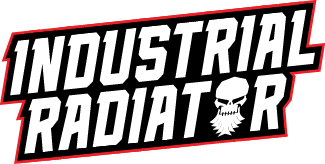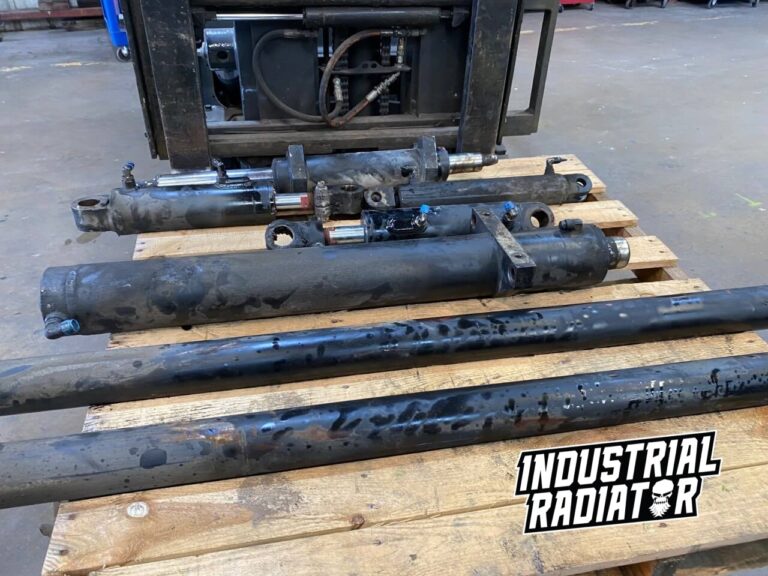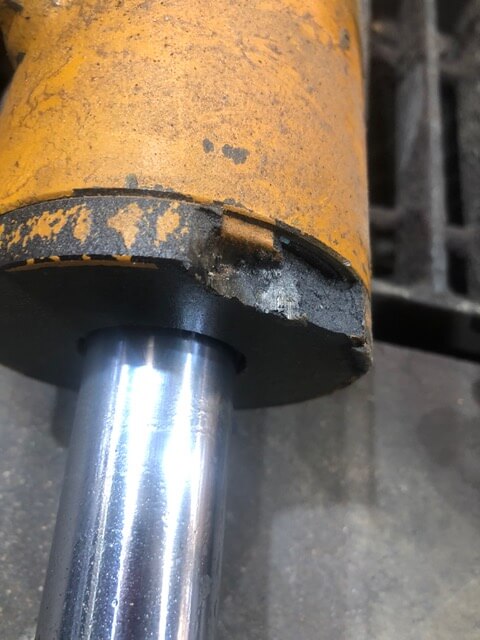For much of the heavy equipment used in oil and gas, construction, mining and other industries, a healthy hydraulic system is crucial. Even small hydraulic cylinders generate tremendous power. That’s why owners and operators should have a basic understanding of proper maintenance and make sure they have a reliable hydraulic cylinder service provider.
Key Components of Cylinder Maintenance
The first part of your hydraulic cylinder to consider is the cylinder rod. The rod is connected to the piston and moves through the cylinder barrel to generate power. Most are chrome-plated, and maintaining that polished surface is critical to preventing fluid leaks.
Taking care of the cylinder rod involves checking for corrosion or other damage regularly. Moisture is a common cause of wear, and will eat away at the chrome plating. Another common cause of damage is rod misalignment. When the piston rod isn’t moving smoothly through the barrel, it creates friction, which can be very damaging over time.
How do we fix these problems? If there’s a bend, the rod can be straightened using a press. Re-chroming the rod will eliminate most surface damage, and is a relatively simple process for an experienced technician. It is also helpful to periodically rotate the hydraulic cylinder (like you would vehicle tires), or to swap it for an alternate. These measures can significantly extend the lifespan of your hydraulic cylinder.
Another important component is the hydraulic oil. As the most commonly-used type of hydraulic fluid, keeping your oil clean is part of basic maintenance. It should be checked regularly for any contamination—a typical cause of system malfunctions. The oil filter also requires regular cleaning and occasional replacement. Don’t underestimate the value of hydraulic oil maintenance to your heavy equipment.
Finally, the piston and piston seal are key parts of any hydraulic cylinder. Pistons are connected to the piston rods, and serve mainly to separate pressure zones within the cylinder barrel. Piston seals must be regularly inspected and carefully maintained to prevent fluid leaks and ensure smooth operation. Seals can be either single or double acting.
Hydraulic Cylinder Testing
One reason why it’s important to know if your hydraulic cylinder is single or double acting is because it affects what type of testing is needed. When performing maintenance, we first do thorough testing to identify what’s going on. We must conduct the right tests for each specific cylinder type or some problems might go unnoticed.
For example, one type of test is the end-of-stroke bypass test. This checks seals at either end of the cylinder, but not the middle. A mid-stroke-bypass test is another type that’s best suited for double-acting cylinders. Hydrostatic testing is a method that checks for fluid leaks at all piston positions.
Improper cylinder testing not only risks potential issues slipping through the cracks, it can also be dangerous for technicians doing the testing. Hydraulics are powerful machines involving massive amounts of pressure, so proper safety precautions are essential.
Hydraulic Cylinder Repair Service
Once a problem has been identified, it’s time to consider hydraulic cylinder repair or replacement. Many cylinder malfunctions are simple to repair with the right expertise and if caught early on. Industrial Radiator Service performs all hydraulic repair with the goal of maximizing your equipment’s lifespan and cost-effectiveness.
If part replacement is the best option, we’ll offer straightforward guidance and will make sure the entire hydraulic system is restored to peak efficiency. In addition to hydraulic cylinders, we also service hydraulic pumps, vacuum pumps and blower motors. Taking a holistic approach is beneficial when executing any hydraulic maintenance plan.
For more information about hydraulic repair and maintenance, contact Industrial Radiator today.



You mentioned hydrostatic testing for hydraulic cylinders. How does that one work? I’d like to know more because I think something is wrong with this piston I am working on. I think I may need a replacement part too. https://www.cincinnatidriveline.com/hydraulics
[…] our service team always fills in small nicks and scratches and then polishes the rod. This baseline maintenance process also includes honing the inside of the cylinder casing, inspecting and polishing the gland, and […]
[…] we’ve detailed in previous posts, a hydraulic system uses pressurized fluid to generate tremendous amounts of force. The fluid used […]